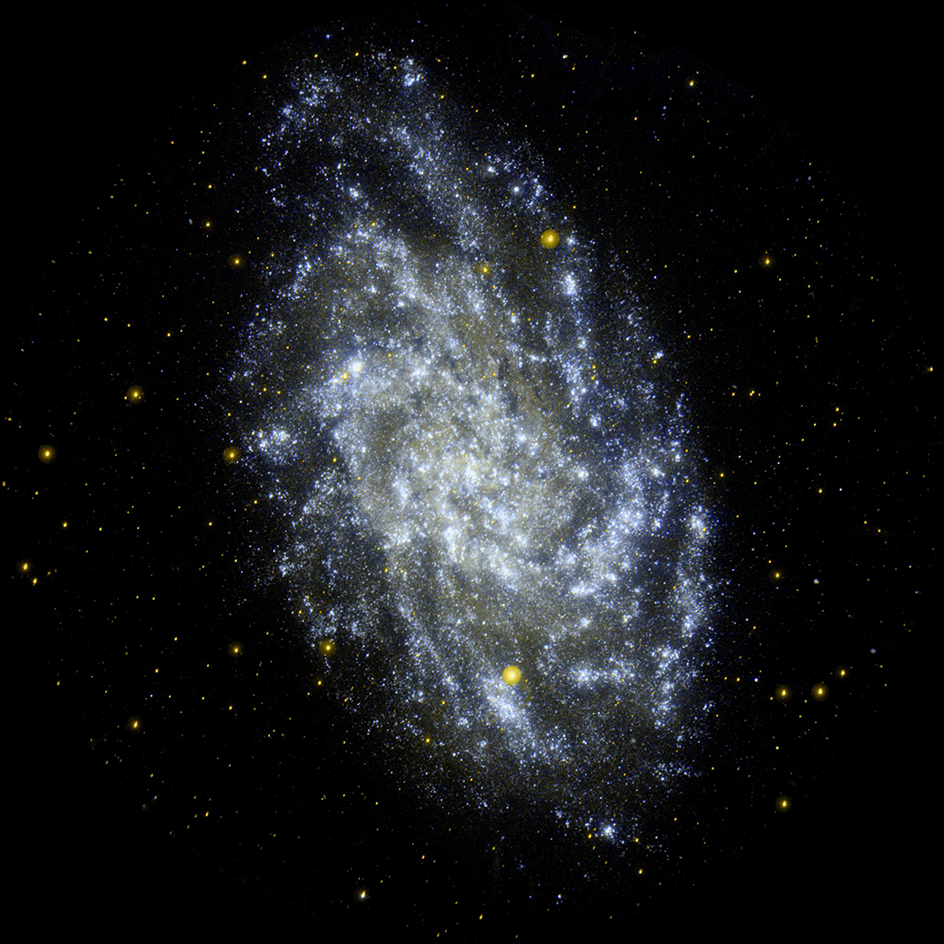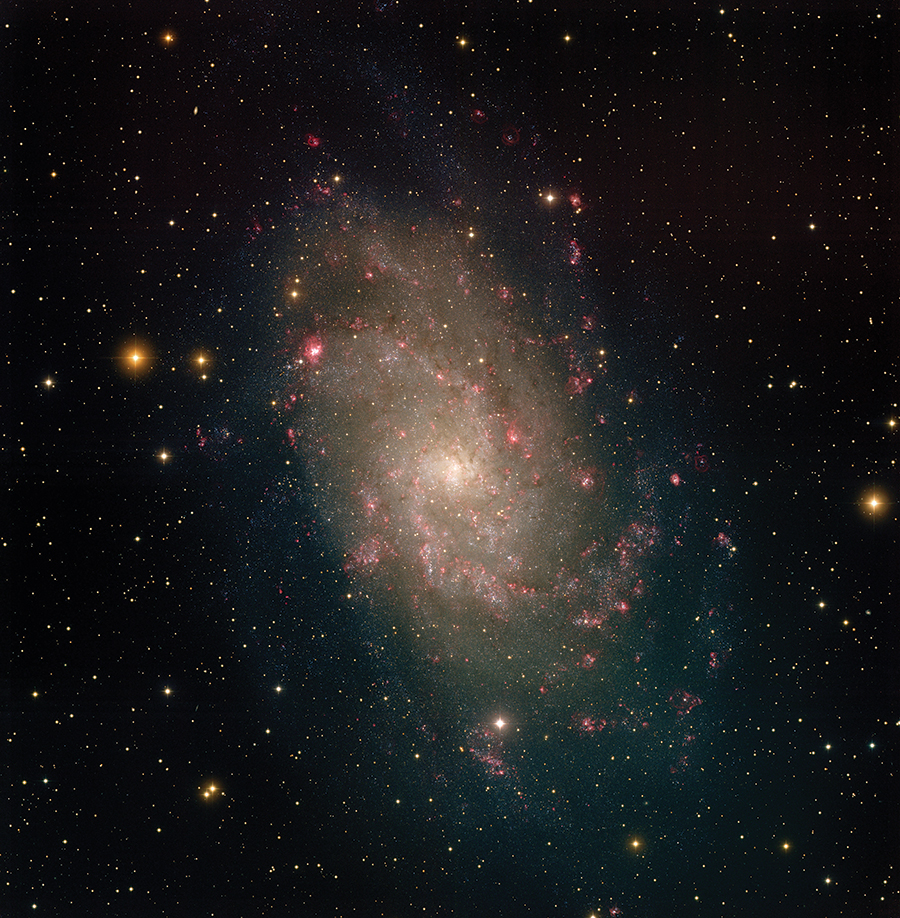Triangulum Galaxy, also known as M33, ranks as the second closest large galaxy to our home galaxy, the Milky Way. Only the Andromeda Galaxy is nearer. The Triangulum Galaxy lies about 3 million light-years from Earth. A light-year is the distance that light travels in a vacuum in one year—about 5.88 trillion miles (9.46 trillion kilometers). The Triangulum Galaxy can be seen on fall and winter nights in the Northern Hemisphere. It appears just north of the constellation Pisces, the Fishes, in the constellation Triangulum, the Triangle. It is barely visible to the unaided eye but can easily be seen with binoculars.

The Triangulum Galaxy, like the Andromeda Galaxy and the Milky Way, is a spiral galaxy, with sweeping arms of stars wrapped about its center. Unlike the other two galaxies, however, the Triangulum Galaxy does not have a bright central bulge. Instead, it consists almost entirely of a thin spiral disk. The disk faces Earth, clearly showing the galaxy’s spiral shape. For this reason, the Triangulum Galaxy is sometimes called the Pinwheel Galaxy in Triangulum. The galaxy also lacks a well-defined halo of old stars extending far beyond the visible disk, as seen in the Andromeda and Milky Way galaxies.
The Triangulum Galaxy has no known satellite galaxies, smaller galaxies that revolve around a larger one. In fact, some astronomers consider the Triangulum Galaxy to be a remote, massive satellite of the Andromeda Galaxy. The Triangulum Galaxy lies about 1 million light-years from the Andromeda Galaxy.
The Triangulum Galaxy ranks as the third largest member of the Local Group of galaxies, the group of galaxies that includes our own (see Local Group ). Only the Andromeda Galaxy and the Milky Way are bigger. By studying the Triangulum Galaxy’s rotation, astronomers have determined its mass (amount of matter). It measures about 10 percent as massive as the Andromeda Galaxy or the Milky Way. The Triangulum Galaxy contains about 50 billion times the mass of the sun.

Because the Triangulum Galaxy is relatively near to Earth, astronomers can study its spiral arms in great detail. Their observations provide clear evidence for the theory that such arms result from waves in the density of matter in the disk (see Galaxy (Spiral galaxies) ). According to this model, as the waves travel, they compress cold gas. The compression causes the formation of stars, which heat the gas. The hottest stars die quickly, leaving behind cooler, longer-lasting stars. The Triangulum Galaxy’s spiral arms contain regions where cold gas, young stars in hot gas, and old stars are arranged just as the model predicts.
